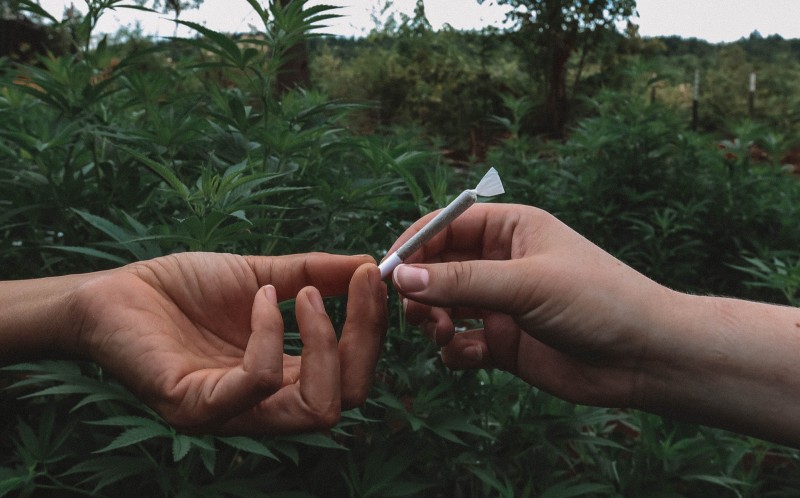The Path To Organic For The Marijuana Industry

Official regulation, which can come when the federal government finally legalizes cannabis, will likely put into place some of the smaller standards, but the fundamental standards will likely stay the same.
TIP: Any cannabis business interested in pursuing organic methods should get started now so they’ll be ready when the organic designation becomes available.
One way to do that is to investigate similar plant products, such as lettuce, spinach, and kale.
Find out what the organic standards are for those consumables, and then take steps to implement them in your grow operation.
These companies may not be able to obtain the official “organic” designation, but they can still use the steps they have taken — such as non-GMO, zero pesticides, all-natural fertilizer, etc. — to promote their products.
While more expensive, there is ample evidence of unprecedented growth in all corners of the cannabis industry, from products that are grown and produced with more organic methods.
Transitioning from a traditional grow operation involving pesticides and the like is no easy task, but the results are well worth the effort and will pay dividends in the future when the “organic” stamp of approval is available to federally legalized cannabis.
Implications on Costs for Producers
The questions that remain: Can small yield growers do well in the business or is the cost too great? Or is it a myth that a sustainable operation is more costly to set up and run than a non sustainable one?
An organic operation preserves the soil food web, doesn’t introduce pesticides into the environment, and results in a more natural product that contains no harmful chemicals.
It’s more or less how the plants would grow in the wild, without human interference.
Non-organic operations, on the other hand, often use chemicals that harm the soil and pesticides that kill off both harmful and beneficial insects — not to mention ending up in the watersheds, where they do even more damage.
Even if the consumer isn’t particularly concerned with the ecological effects of growth operations, they should consider the toxins left over in the plant itself.
These heavy metals and salts inevitably find their way into the body of the individual consuming the cannabis.
Organic production reflects the difference between quality versus quantity.
The goal of the organic grow operation is quality and purity of the product, even if that means smaller yield.
The goal of the non-organic grow operation is usually, first and foremost, to produce as large a yield as possible, with quality and purity taking a back seat.
Before the rise of organic operations, the industry operated under the assumption that small-yield growers couldn’t do well in competition with large-yield growers.
Many growers were afraid to risk their operation for a smaller, cleaner product.
But a brave few recognized that these cleaner products could improve the final product and that cannasseurs would be willing to pay higher prices for a better experience.
These small-yield growers now have the experience to take their organic operations to the next level as the market continues to grow.
With change comes the need to educate.
As consumers learn what it means for their cannabis to be “organic” and as they experience the effects of those cleaner products, they recognize the value and are willing to pay a higher price.
It also helps that there’s an existing demand for organic foods so the cannabis industry doesn’t have to start from square one.
Nevertheless, there is a need for organic growers to educate the industry and the end user about what their businesses do to ensure the cleanest product possible.
While there is a bit of a learning curve, dispensary personnel and consumers catch on quickly because they’re already familiar with how “organic” applies to the food they eat.
Growing the Sustainable Side of the Cannabis Industry
For businesses that are considering getting into the sustainable side of the cannabis industry, the top advice is to just do it, but start small and avoid getting overwhelmed by the big picture.
It isn’t necessary to implement everything all at once.
Take one step at a time rather than trying to leap from the beginning to the end.
Keep the current operation going, in the short term and start transitioning to organic standards by building a compost pile and then implement that into a grow operation.
After that, it’s a short step to learning about making organic fertilizer and cutting back on the heavy chemicals.
There’s a lot of information available about organic gardening in general, so it’s important to engage in some trial and error to learn how to apply the information to cannabis farming.
420 Intel is Your Source for Marijuana News
420 Intel Canada is your leading news source for the Canadian cannabis industry. Get the latest updates on Canadian cannabis stocks and developments on how Canada continues to be a major player in the worldwide recreational and medical cannabis industry.
420 Intel Canada is the Canadian Industry news outlet that will keep you updated on how these Canadian developments in recreational and medical marijuana will impact the country and the world. Our commitment is to bring you the most important cannabis news stories from across Canada every day of the week.
Marijuana industry news is a constant endeavor with new developments each day. For marijuana news across the True North, 420 Intel Canada promises to bring you quality, Canadian, cannabis industry news.
You can get 420 Intel news delivered directly to your inbox by signing up for our daily marijuana news, ensuring you’re always kept up to date on the ever-changing cannabis industry. To stay even better informed about marijuana legalization news follow us on Twitter, Facebook and LinkedIn.




